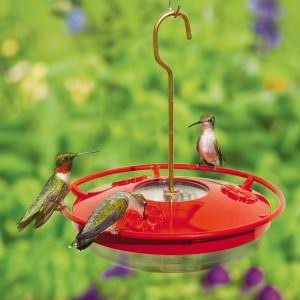Introduction
Quick Navigation
Hummingbird nectar can degrade or ferment, which implies hummingbirds will attempt it once or twice, but then it gets on bad and they may never appear back.
You must transform your feeder’s nectar, even if it appears like it hasn’t relinquished a drop, on a normal basis. During hot weather, alter it every two days. In milder climate, once a week is nice.
To also conserve your hummingbird nectar from taking off bad, you’ll like to put your feeder in an area that gets a mix of daylight and shade throughout the day. If the daylight is extremely severe, the nectar can warm up and decay or ferment in only a few hours.
That being announced, maintaining a feeder completely in the shade isn’t favorable either. When you do that, it will be difficult for you to see your visitors’ iridescent hues.
If the feeder is cloudy or if you notice black debris clean instantly and tidy up very well. Wash out many times and allow the feeder dry totally before refilling also. The validity of mold in a hummingbird feeder can be extremely dangerous for the hummingbirds who devour its nectar.
Hummingbirds reside in several different portions of the world. They understand the climate conditions and patterns just as well as you do and it’s significant to enable keep them safe in the handed-out environment.
How to Clean Hummingbird Feeders
The very character of hummingbird nectar renders it significant to save your feeder clean. Since the nectar is a combination of water and sugar, it’s susceptible for micro-organisms to invade and spoil it. Once that occurs, you need to alter your nectar but you also need to tidy up your feeder, too. Doing so safeguard that your feeders aren’t just switching those micro-organisms to the next batch of nectar.
If the mold, bacteria and these other organisms accumulate too much, they can make your hummingbird guests sick, and your birds can perish by consuming this horrible nectar.
See more here
How to Clean a Hummingbird Feeder Bottle
Although hummingbird feeder bottles arrive in a big assortment of shapes, they all can be tidied up in the same manner. Commence it by washing the bottle out and then restore it with warm, soapy water. Clear that and then utilize the bottle brush to wipe the interior. Once neat, rinse and restore it with fresh nectar. Don’t ignore to wipe down the utmost of the bottle, too.
How to Clean a Hummingbird Feeder Base
The floor of every hummingbird feeder can be burst separately with a soft pull. Once you’ve performed that, utilize your bottle brush to wash the inner and all the corners and cavities with warm, soapy water. Furthermore, wash any saddles and exterior. Some Top Fill Hummingbird Feeders possess an additional O-ring washer inside the softer percentage of the base. You should eliminate that for tidying up too. Just remember to inaugurate it in the same path if it gets on mistakenly, you won’t be eligible to reseal the floor cover.
Check here
How to clean your hummingbird feeders
When studying this we stumbled upon a lot of brawling data. Some people announced soap was nice, some arguing on preventing soap and just using vinegar. We think the crucial thing is to discover something that is going to be easy for you to bear up with. Consistent cleaning is key. We would approve a good thorough soap wash every time you restore the feeder, with soaking in vinegar or bleach as a periodic extra intense clean or if you glimpse a lot of difficulties with mold and fungus.
Conclusion
Whether you are making your nectar or not, conserving your nectar feeder clean is of utmost significance. How often should you tidy up your hummingbird feeder? Between 1-6 days banking on the outside temperature. The hotter it is external, the more often you’ll require to tidy up your feeder and put out new nectar to avert spoilage, mold and bacterial growth.

